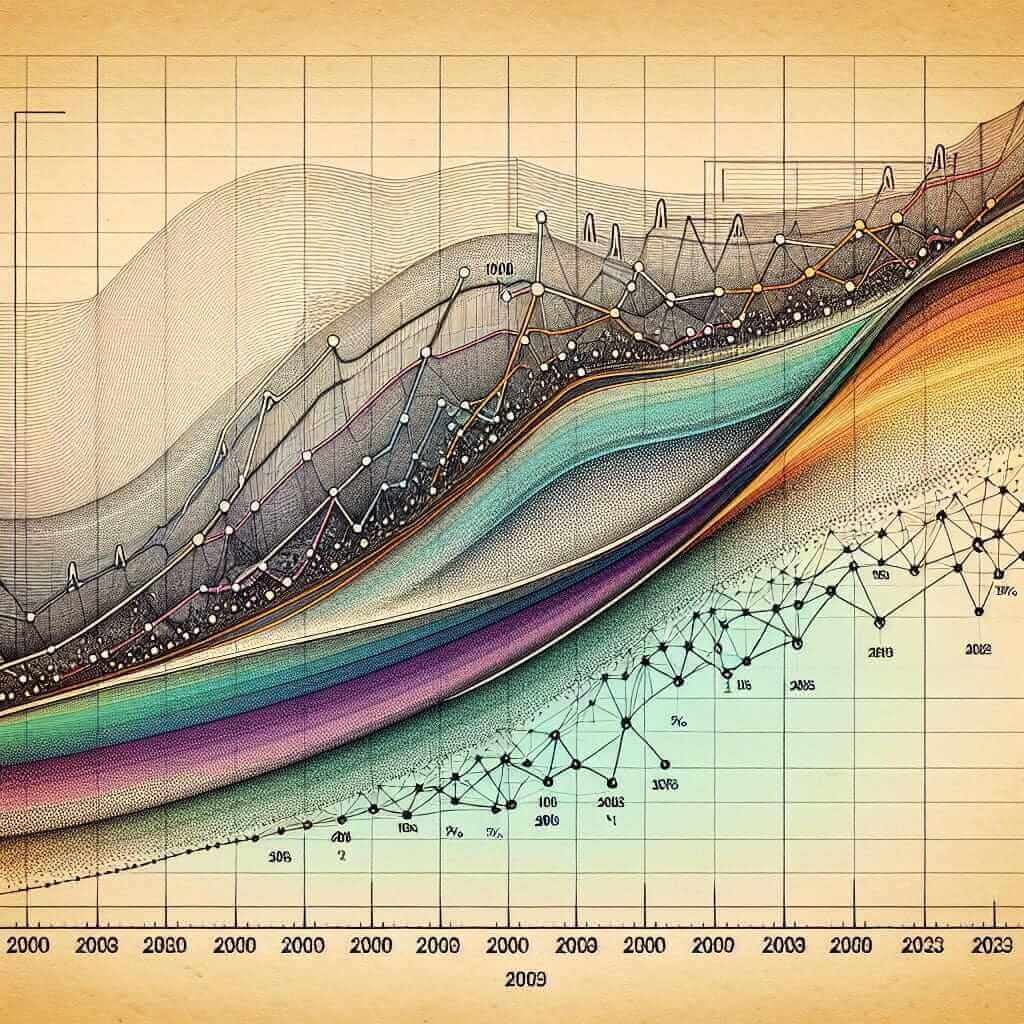Analyzing trends in household internet usage is a relevant and critical topic that has featured in various forms within the IELTS writing task 1. The instance of observing, comparing, and reporting on data related to internet usage is recurrent, and honing this skill can significantly improve one’s band score.
In this article, I will demonstrate how to approach task 1 of the IELTS writing exam using data on trends in household internet usage from 2000 to 2023. This data-driven essay will not only provide practical writing examples and strategies but also offer insights into effectively using specific vocabulary and grammar to score high in the IELTS exam.
Possible Task Topics
Below are some potential task questions on this topic:
-
The chart below shows the proportion of households in three different countries with internet access from 2000 to 2023.
-
The table below provides information on the percentage of households that had access to the internet from 2000 to 2023 in five different regions.
-
The graph presents trends in household internet usage rates in various age groups between 2000 and 2023.
Example Task Question and Data Visualization
We will work on the first proposed topic: “The chart below shows the proportion of households in three different countries with internet access from 2000 to 2023.”
The Data Representation

Analyzing the Task
- Identify the graph type (Line Graph): The graph shows trends over time for different categories.
- Look for key trends: Identify significant increases, decreases, and steady trends.
- Compare and contrast: Compare data between different countries and note the similarities and differences.
Sample Response
Introduction
The line graph illustrates changes in the proportion of households in three distinct countries – Country A, B, and C – with internet access from 2000 to 2023.
Overview
Overall, there was a substantial increase in household internet usage in all three countries over the given period. Notably, Country A saw the highest rise, becoming the leading nation in terms of internet penetration by 2023.
Detailed Analysis
In 2000, only 10% of households in Country A had internet access, while the figures for Country B and Country C were slightly higher, at 15% and 20%, respectively. Over the subsequent years, all three countries experienced significant gains in internet penetration. By 2010, the percentage of households with internet access had reached 50% in Country A, 45% in Country B, and 35% in Country C.
From 2010 onwards, Country A continued to see a sharp rise, with an 80% internet penetration rate by 2015 and ultimately, 95% by 2023. Country B’s increase was more gradual, achieving 60% by 2015 and 85% by the end of the period. In contrast, Country C experienced slower growth overall, reaching 70% in 2023.
Summary
In summary, the data signifies a marked upward trend in household internet usage across the three countries, with Country A witnessing the most significant increase over the 23-year period.
Word count: 200 words
Key Takeaways for Writing Task 1
Vocabulary and Grammar Highlights
- Use diverse verbs to describe trends: “increase,” “rise,” “climb,” “decrease,” “decline,” etc.
- Consistent use of tenses: Utilize past tenses for describing completed actions and trends.
- Comparison words: Employ comparative and superlative forms like “higher than,” “the most significant,” etc.
- Avoid repetition: Use synonyms and varying sentence structures to keep the writing engaging.
Example Vocabulary
- Household (noun) – /ˈhaʊsˌhoʊld/: A domestic unit consisting of the members who live together in the same house.
- Proportion (noun) – /prəˈpɔr.ʃən/: Part or share of the whole.
- Penetration (noun) – /ˌpen.əˈtreɪ.ʃən/: The action or state of making a way into or through something.
- Substantial (adj) – /səbˈstæn.ʃəl/: Of considerable importance or size.
- Gradual (adj) – /ˈɡrædʒ.u.əl/: Taking place or progressing slowly.
- Steady (adj) – /ˈstɛd.i/: Firmly fixed, supported, or balanced; showing little variation.
Conclusion
To score a band 7 or above in the IELTS writing task 1, it is crucial to present a clear overview, effectively describe trends, make relevant comparisons, and use a range of vocabulary and grammar structures. By focusing on these key elements and practicing regularly with varied data, you can enhance your ability to tackle this type of question with confidence.